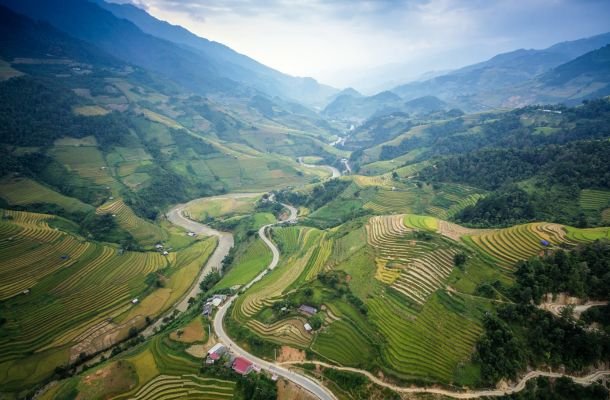Geography of Albuquerque, NM

Albuquerque, New Mexico, is a city of remarkable geographical diversity and uniqueness. Nestled in the central part of the state, Albuquerque’s location, topography, and climate contribute to its distinctive character. This comprehensive guide explores the geographical features of Albuquerque, providing an in-depth look at its physical landscape, climate, natural resources, and urban layout.
Introduction
Albuquerque, often referred to as “ABQ,” is the largest city in New Mexico and serves as a cultural and economic hub for the region. Its geography is marked by a variety of landforms, including deserts, mountains, and river valleys, which have shaped the city’s development and character. This guide delves into the various geographical aspects of Albuquerque, from its physical features to its climate and urban planning.
Physical Geography
Location and Coordinates
Albuquerque is situated in north-central New Mexico, lying at an elevation of approximately 5,312 feet (1,620 meters) above sea level. The city’s geographical coordinates are approximately 35.0844° N latitude and 106.6504° W longitude.
Topography
Sandia Mountains
One of Albuquerque’s most prominent geographical features is the Sandia Mountains, which form a dramatic backdrop to the city. These mountains rise to an elevation of over 10,000 feet (3,048 meters) and are named “Sandia” after the Spanish word for “watermelon” due to their pink hue at sunset. The Sandias are a significant part of the city’s landscape, offering recreational opportunities and serving as a natural barrier between Albuquerque and the eastern plains.
Rio Grande Valley
The Rio Grande, a major river that flows from Colorado to Texas, runs through Albuquerque. The valley created by the river is fertile and supports a range of agricultural activities. The river’s presence has historically been vital to the settlement and development of the area.
Desert and Mesa Lands
Albuquerque is situated in the Chihuahuan Desert, characterized by its arid climate and unique flora and fauna. The city is surrounded by mesa lands, flat-topped hills that are a common feature of the southwestern United States. These mesas contribute to the distinctive landscape of the region.
Natural Resources
Water Resources
Water resources in Albuquerque are crucial, given the region’s arid climate. The Rio Grande is the primary water source for the city, but groundwater also plays a significant role. The city’s water supply is managed through a combination of river diversion, reservoir storage, and groundwater extraction.
Mineral Resources
The area around Albuquerque is rich in various minerals, including copper and uranium. Historically, mining has been a part of the region’s economy, although today, the focus has shifted more toward tourism and technology.
Climate
Overview
Albuquerque experiences a high desert climate, characterized by significant temperature variations between day and night, and between seasons. The city enjoys plenty of sunshine throughout the year, contributing to its dry conditions.
Temperature and Precipitation
Seasonal Variations
- Spring: Spring in Albuquerque is mild and pleasant, with temperatures ranging from 50°F to 80°F (10°C to 27°C). The season is marked by blooming wildflowers and occasional rain showers.
- Summer: Summers are hot, with daytime temperatures often exceeding 90°F (32°C). Despite the heat, evenings are cooler due to the high elevation. Summer is also the monsoon season, bringing brief but intense thunderstorms.
- Fall: Fall is characterized by cooler temperatures and dry conditions, with temperatures ranging from 40°F to 70°F (4°C to 21°C). The season offers clear skies and colorful foliage.
- Winter: Winters in Albuquerque are generally mild compared to other areas at similar elevations. Daytime temperatures range from 30°F to 50°F (-1°C to 10°C), while nighttime temperatures can drop below freezing. Snowfall is occasional but not heavy.
Wind and Humidity
Albuquerque is known for its breezy conditions, particularly in the spring and summer months. The city’s low humidity further contributes to the dry, high desert climate.
Urban Geography
City Layout
Albuquerque’s urban layout reflects its historical growth and geographic constraints. The city is divided into various neighborhoods, each with its own character and history.
Downtown Albuquerque
Downtown Albuquerque is the city’s central business district and cultural hub. It features a mix of historic and modern architecture, with numerous shops, restaurants, and entertainment venues. The area is characterized by its grid street pattern, which dates back to the city’s early development.
Nob Hill
Nob Hill is a vibrant neighborhood known for its historic Route 66 heritage, eclectic shops, and lively dining scene. It is situated along the eastern edge of downtown and offers a unique blend of old and new.
The Heights
The Heights is a residential area located to the east of the city center, characterized by its higher elevation and scenic views. It is a primarily suburban area with various parks and schools.
Transportation and Infrastructure
Roadways
Albuquerque is well-connected by a network of major roadways, including Interstates 40 and 25. These highways provide access to other cities and regions, facilitating both local and regional travel.
Rail and Public Transit
The city also features a commuter rail service, the New Mexico Rail Runner Express, which connects Albuquerque with other major cities in New Mexico. Public transit within the city is provided by ABQ RIDE, offering bus services throughout Albuquerque and the surrounding areas.
Green Spaces and Parks
Albuquerque Open Space
The city’s open space program maintains several large parks and natural areas, including the Albuquerque Open Space, which offers recreational opportunities and preserves the natural landscape.
City Parks
Albuquerque has numerous city parks that provide green spaces for residents and visitors. Notable parks include:
- Biopark: Includes the Albuquerque Zoo, Botanic Garden, and Tingley Beach.
- Rio Grande Nature Center State Park: A popular spot for birdwatching and nature walks.
Environmental Considerations
Conservation Efforts
Albuquerque’s geographic features and climate necessitate various conservation efforts to manage natural resources and protect the environment. The city has implemented programs to promote water conservation, reduce waste, and preserve natural habitats.
Urban Development
Urban development in Albuquerque is influenced by its geographical constraints, including the proximity to the Sandia Mountains and the Rio Grande. Planning and zoning regulations aim to balance growth with the preservation of natural landscapes.
Historical Geography
Indigenous and Colonial Periods
The Albuquerque area has a rich history that predates the arrival of European settlers. Indigenous peoples, including the Pueblo and Navajo tribes, have long inhabited the region. Spanish explorers and settlers arrived in the 17th century, establishing the city as a Spanish outpost.
Modern Development
The city’s modern development began in the 19th and 20th centuries, with significant growth in the post-World War II era. The expansion of transportation infrastructure and economic development has shaped Albuquerque into the vibrant city it is today.
Conclusion
Albuquerque’s geography is a tapestry of diverse landscapes, from the striking Sandia Mountains to the arid desert plains. Its location, climate, and natural resources have profoundly influenced its development and character. Understanding Albuquerque’s geographical features provides insight into the city’s unique environment and its role within the broader context of New Mexico and the southwestern United States.
Find us
Tuesday
Wednesday
Thursday
Friday
Saturday
Sunday
10 am – 10 am
10 am – 10 am
10 am – 10 am
10 am – 10 am
10 am – 10 am
10 am – 10 am









